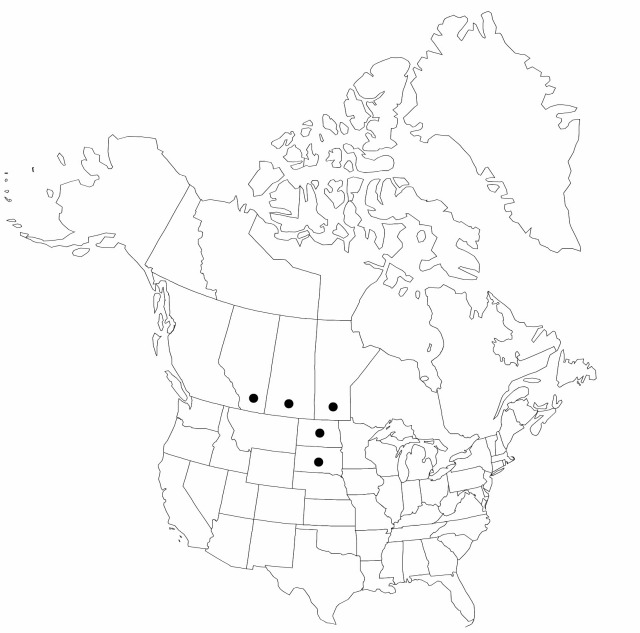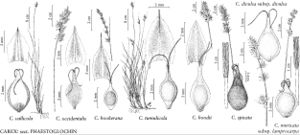Carex hookeriana
Amer. J. Sci. Arts 29: 248, plate X, fig. 75. 1836.
Plants without conspicuous rhizomes. Culms 15–80 cm, 1.5–2 mm wide basally, 0.5 mm wide distally. Leaves: sheaths tight, green, fronts white-hyaline; ligules less than 2 mm, wider than long; widest leaf blades 1.5–2.5 mm wide. Inflorescences with 5–10 spikes, 2–5 cm × 5–10 mm; proximal internodes 1–2 times as long as proximal spikes; proximal bracts 1–2 cm; spikes with 5–10 erect perigynia. Pistillate scales brown with green midvein, ovate, 2.7–3.6 × 1.4–2.1 mm, body longer and wider than perigynium, apex awned. Anthers not measured. Perigynia pale green to pale brown, veinless or obscurely veined abaxially, 2.6–3.5 × 1.2–1.5 mm, margins serrulate distally; beak 0.8–1.5 mm, apical teeth 0.3–0.5 mm. Achenes elliptic-circular, 1.5–1.7 × 1.1–1.2 mm.
Phenology: Fruiting late spring–early summer.
Habitat: Swamps, mesic to wet-mesic grasslands and open forests
Elevation: 300–500 m
Distribution

Alta., Man., Ont., Sask., N.Dak., S.Dak.
Discussion
Carex hookeriana was collected once in Ontario along Lake Superior’s north shore, but its status in Ontario is unclear.
Selected References
None.
